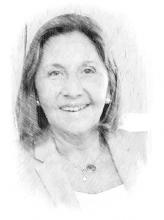You are here
Spanish, the first modern language in Europe
Apr 23,2022 - Last updated at Apr 23,2022
As every year, on April 23, we celebrate Spanish Language Day, a language shared by more than 500 million people around the world, being the second language with the largest number of native speakers (only behind Chinese) and the second language in international use (behind English).
This year we want to dedicate the celebration to the leading figure of Elio Antonio de Nebrija, who died 500 years ago in 2022. Nebrija was a Renaissance humanist, author in 1492 of the first Spanish language grammar. Its grammar made Spanish the first modern European language to be subject to rules, as was the case with the educated languages: Latin or Greek. It was an audacity misunderstood at the time because no one saw the need to set standards for languages that were considered "popular" and that everyone learned just by hearing them in their childhood.
Born as Antonio Martínez de Cala in the municipality of Lebrija (near Seville), he studied at the universities of Salamanca and Bologna, two of the oldest and most prestigious in Europe. His admiration for the classical culture of Rome would lead him to change his name to Elio Antonio de Lebrija or Nebrija, evoking the Latin name of his birthplace. He was a professor at the universities of Salamanca and Alcalá de Henares, teaching various linguistic subjects, particularly Latin, which was then the language used throughout Europe for university studies. His Latin grammar learning manual entitled "Introdutiones latinae" was a real best-seller not only in Spain but throughout Europe, with more than a hundred editions, including in cities such as Paris, Venice, Antwerp or Cologne. Being professor of Latin at the University of Alcalá and due to his knowledge of Hebrew, he was involved in the translation of what was known as the "Alcalá Polyglot Bible", promoted by Cardinal Jiménez de Cisneros. Nebrija is the author of the motto "Tanto monta" (“it makes no difference”), which King Ferdinand the Catholic, the first Spanish monarch, adopted as his personal motto inspired by the episode of the Gordian knot, starring Alexander the Great. According to legend, whoever was able to undo this intricate knot would become the owner of Asia. Alexander the Great instead cut it down with his sword saying "it makes no difference". Thus, he implied that the means used to solve a problem are not important in terms of its resolution and that a monarch cannot stop in the face of difficulties.
In addition to being a linguist, Nebrija was one of the main promoters of the use of printing in Spain and both his son and grandson became printers. He took particular care of the printing of his own works, choosing the typeface, correcting the printing tests and supervising the entire process. He was also the first writer to claim copyright in the Western world and there are even those who point at him as one of the first defenders of freedom of expression and conscience, even by confronting the political and religious powers of his time.
Nebrija's grammar would become a reference for the elaboration of grammars of other languages, not only European, but also American. And, although it may surprise many readers who might have a negative vision of the Spanish presence in the American continent, the truth is that, following the footsteps of Nebrija, many Spaniards (mainly priests and monks) endowed the main languages of the original populations of America with their own writings and grammars.
It is noteworthy that the first grammar of an American language, specially the Nahuatl language (still spoken today in parts of Mexico) was written in 1531, only one year after the first French grammar (1530) and before the first German (1534) and English (1586) grammars. Nahuatl grammar was followed by many others, such as that of the Mixtec and Zapotec languages (also spoken in Mexico) in 1558 or of the Quechua language (spoken in Peru and other Andean countries) in 1560. At the end of the reign of Philip II of Spain (1598) most of the indigenous languages of America had transcription into the Latin alphabet, grammars and dictionaries.
The inclusion of the first word originating from America in the dictionary of a European language is also due to Nebrija. It was the term "canoe", which had already been used by Christopher Columbus, and, which Nebrija included in his Spanish-Latin dictionary, written in 1495.
Elio Antonio de Nebrija was an extraordinary linguist and a Renaissance man who, based on a profound knowledge of the classical heritage of Greece and Rome, knew how to make Spanish the first modern language in Europe and establish a model that would inspire other languages in both shores of the Atlantic Ocean.
Aranzazu Banon Davalos is the Ambassador of Spain to Jordan













